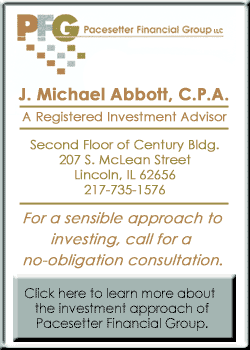|
What
is the house of the future? Is it a building one would find in a
Jetsons cartoon, or is it something more? In his book
"High-Access Home," author Charles Riley II believes
that "this future home, whose time is now, is neither fantasy
nor fiction. Its foundation is a philosophy that represents the
latest wave in thinking about what is and what is not a functional
environment for all." The belief that living spaces should be
functional and barrier-free is based on the concept known as
universal design. Universal design has not only been instrumental
in the creation of barrier-free living spaces; it has also
contributed to the overall improvement of our lives.

As
an example, Riley cites the development of the automatic garage
door opener. This idea, born of the universal-design concept, was
invented for people who were physically unable to lift the heavy
garage doors. Today, automatic garage door openers are commonplace
in most homes.
The
impact of universal design cannot be overstated. Riley writes of
"spaces designed for everyone, without regard for
preconceived categories such as nondisabled or disabled, young or
old, short or tall. These standards set by universal design make
life easier for everyone in the home."

Riley
also points out that while there are existing laws that regulate
the building and accessibility of public structures, there are no
such standards for private homes.
Although
there are hundreds of universal design features that demand the
attention of planners, the most common features usually include no
steps, wider hallways and doors, levers in place of knobs,
technology-based solutions (such as audible and visual smoke
alarms), non-slip floors, no-step access in the bathroom, roomier
garages, elevators, handrails and grab bars, light switches, and
touch pads. All of these features aid the builder in adhering to
the simple philosophy of universal design: "Make it safe,
make it easy, and look for the solution to the design problem
while maintaining subtlety and beauty."
"High-Access
Home" is divided into four categories: "Sheer
Elegance," "Right From The Start," "Back To
The Future," and "Toward Accessibility — Room By
Room."

In
"Sheer Elegance," Riley demonstrates how beauty, history
and style can be easily incorporated into the universal design
plan. This is illustrated by the examples of three different kinds
of homes: a Georgian colonial home in Connecticut, a recently
built mansion in Maryland and a modernistic masterpiece in
California. In all three, universal design was the cornerstone for
barrier-free living that accentuates a style of gracious comfort.
(To
top of second column in this book review)
|
"Right
From The Start" examines the implementation of universal design
during the construction of a structure. The emphasis is on building
it properly from the ground up rather than modifying an existing
space. Interwoven throughout this section are Riley’s comments on
an architectural precursor to universal design: Frank Lloyd Wright.
Riley writes that "Wright believed in the same flow of movement
from living space to kitchen and bedroom, and was similarly engaged
in a pursuit of the simplicity that is at the core of universal
design."

In
"Back To The Future" Riley takes the opposite approach
from the previous section and concentrates on the union of
accessibility in structures of historic importance. The two examples
chosen are Top Cottage (a Franklin D. Roosevelt hideaway) and the
19th-century Boston structure that houses the Carroll Center for the
Blind. According to the preservation architect in charge of Top
Cottage, Roosevelt as designer planned the structure "so that
the whole cottage is centered on the idea of independent living long
before that term gained popularity."

The
concluding section, "Toward Accessibility — Room by
Room," is a room-by-room treatment of the most important areas
of a private home. These are the living spaces that greatly benefit
from the influences of universal design — most notably areas such
as the entry, living room, bedrooms, bathrooms, kitchens and home
office. Using the features mentioned earlier, Riley demonstrates
that universal design provides solutions for barrier-free living
while providing an aesthetically pleasing effect on the interior
space.
"High-Access
Home" is an essential source for anyone who is considering
building, rebuilding or modifying a living space. Beautifully
illustrated with stunning photography, the book is full of
innovative ideas for making a home comfortable, easy to live in and
visually attractive. The book is indexed and contains a useful list
of addresses for resources, information and assistance on universal
design.

Riley
has done an admirable job demonstrating the advantages of employing
universal design in the building or remodeling process. To
underscore its importance he quotes George Covington, former special
assistant for disability to the vice president of the United States:
"The object of universal design is to create a building or
product that can be used by the widest range of individuals possible…universal
design at its best is seamless, almost invisible." Riley has
succeeded in integrating this concept into a wonderful publication
that should impact the lives of millions of people.
For
more information, visit the library at 725 Pekin St. or call
217-732-8878.
[Richard
Sumrall, Lincoln Public Library District]
|

